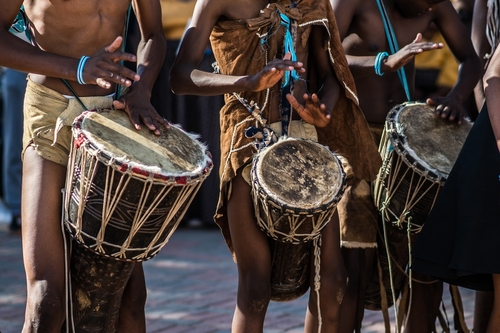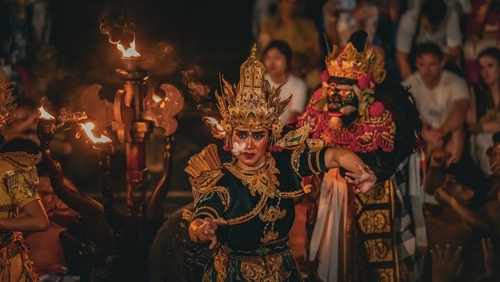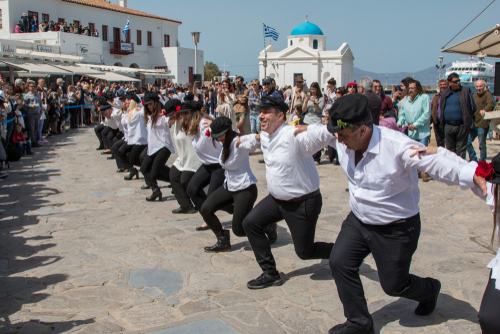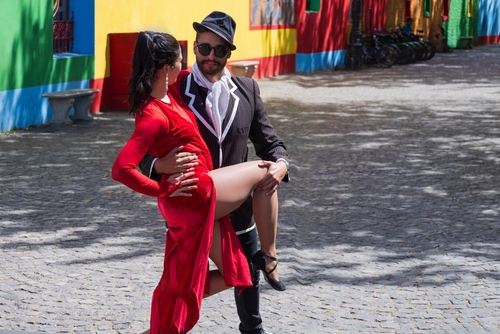Dance unites people. There’s no language barrier, the music is hypnotic, and it essentially links generations. It’s a powerful way to convey emotions, tell stories, and celebrate. Traditional dances preserve history, culture, and values perfectly.
Just like Remitly connects families across borders, traditional performing arts have a way of connecting us to where we come from like nothing else. And above all, traditional dances are entertaining.
Let’s take a walk through the many global traditional dances still being performed today. We’ll explore their cultural significance, the stories they tell, and how they continue to thrive and adapt in the modern world.
The heart of cultural identity: why traditional dance matters
Today, guided by rhythm and movement, dance plays a central role in storytelling, religious ceremonies, and social bonding, as it has throughout history. Shared beliefs, values, and heritage are conveyed in a fun and engaging way.
Ask UNESCO and they’ll tell you just how important it is to preserve culture and heritage alongside national monuments. And one of the best ways to do that is through traditional dance.
Take the traditional performing arts in Indonesia, Singapore, and Malaysia, for example. UNESCO has an ongoing project to bring artists together to share their performances across borders. The goal is to get younger people more excited about these cultural practices.
We can also look at the Rapa Nui people of Easter Island to illustrate the importance of heritage arts. The island endured centuries of upheaval. Colonization led to population loss, suppression of their language, and erosion of their culture.
The Rapa Nui’s traditional dance, called Hoko, survived. This group dance, with lots of chanting and stamping, allowed performers to communicate spiritual beliefs and stories that transcended language. Now, this traditional dance is a highlight of the Tapati Rapa Nui Festival.
African beats: ancestral connections through movement

Through communal dance, Africa’s distinct cultures can strengthen ancestral ties. The movement, rhythm, and storytelling combine to create powerful and uniting experiences. Drumming and movement are often inseparable. In Africa, it’s not uncommon to find dance, music, and spirituality showcased in everyday life.
The South African Gumboot dance
This iconic dance style originated with mine workers in the late 19th and early 20th centuries. Since they were forbidden from speaking while underground, they turned to a rhythmic stomping and slapping of their boots. This, paired with communicative gestures, allowed the workers to feel connected. At its core, the Gumboot Dance is now a symbol of how resilience can come from oppression.
The Senegalese Sabar
The Sabar dance in Senegal also relies heavily on drumming. The footwork is intricate, the body movements are flowing, and the beats are hypnotic.
This West African dance is typically performed at important family celebrations and community gatherings. It’s special because there’s constant communication between the drummers and the dancers for an interesting real-time evolution.
Africa’s dance influence on the world
African traditional dances have also had a profound influence on global performing arts. That’s probably most evident with the American jazz dance style, which evolved in the US through African slaves.
The rhythms and movements of West African dances like Sabar directly shaped Afro-Caribbean, Afro-Brazilian, and other African-American dance traditions, including hip-hop and line dancing.
Asian elegance: precision and spirituality in motion

The words that define Asian traditional dances are discipline and spirituality. Of course, there’s always a story to tell, too. Many of the performing arts in this region involve extensive training, expert precision, and an enormous dedication to the craft.
Indian Bharatanatyam
In India, Bharatanatyam is one of the oldest classical dance forms, with roots in Hindu temple rituals. Dancers undergo years of rigorous training to master intricate footwork, hand gestures, and subtle facial expressions. Watch a performance and you’ll see devotion, myth, and philosophy conveyed without a single word.
Japanese Butoh
In contrast, Japan’s Butoh is a relatively new dance form. This avant-garde dance emerged in the post-war mid-20th century. But just because it isn’t as old as Bharatanatyam, which dates back to 300 BCE, doesn’t mean it isn’t deeply spiritual and culturally important.
The dance is extremely slow and requires dancers to create shapes with their bodies to express experiences like death and rebirth. To preserve the dance’s emphasis on discipline, inner reflection, and aesthetics—principles rooted in Zen and Shinto traditions—dancers train to be flexible and meticulous with their movements.
Indonesian Kecak
In Indonesia, the Kecak dance of Bali is truly mesmerising. It’s an ensemble performance where dozens chant “cak-cak-cak” in unison, forming a vocal orchestra—no traditional instruments required.
Traditionally performed exclusively by men, it wasn’t until 2006 that the first women’s Kecak dance groups were formed. The dance itself centres around Ramayana, an age-old Hindu epic tale of good vs. evil that combines a spiritual ritual with a dramatic spectacle.
Modern adaptations
To find wider audiences, these traditional dances have expanded performance criteria. For example, the Kecak, once reserved only for temple ceremonies, is now performed all over the world. The same is true for Bharatanatyam.
The music of these Asian art forms is also showcased in movies, which helps increase their popularity.
European folk traditions: community and celebration

These days, you’ll find European traditional dance performed in both big city festivals and rural villages. The dances have evolved through migration and time into what they are today. Irish dancing travelled to the US through immigration and influenced conventional tap dancing, and flamenco found new life in Latin America through Spanish migration.
Irish Dancing
Perhaps one of the most recognizable folk dances is Irish dancing, made popular around the world through the performance Riverdance. Attend a show and you’ll experience fast footwork, upright posture, and rhythmic precision.
Historically, dancing was common as part of rural gatherings and religious celebrations, but now it’s definitely on the international stage.
Spanish Flamenco
A traditional dance of Spain, Flamenco has elements of Andalusian, Romani, Moorish, and Jewish cultures. These traditional dances are extremely expressive and can convey both passion and sorrow.
In the past, Flamenco flourished in small village taverns, but now there are shows at theatres worldwide. This dance is so culturally important that in 2010, it made the list of UNESCO Intangible Cultural Heritage.
Greek Syrtaki
Syrtaki, like the Japanese Butoh, is a newer dance on the scene. The music was actually created by Mikis Theodorakis, a Greek composer, in 1964. It became iconic after it was featured in the film “Zorba the Greek,” and it’s been going ever since.
Today, this group dance is performed at weddings and other gatherings to symbolize hospitality. It’s now part of the national identity and is characterized by a gradual build from slow steps to fast, energetic ones.
Latin American passion: true cultural fusion

Shaped by centuries of intermingling between Indigenous peoples, European colonizers, and the African diaspora, Latin American heritage arts play a balancing act. They merge joy and celebration with struggle.
Argentine Tango
First appearing in Buenos Aires around 1880, the tango originated in working-class neighbourhoods. It fuses African rhythms with European instruments and local folk traditions into a dance marked by intimacy and tension.
The tango was also considered vulgar when it emerged, but despite this, it’s grown into a global art form, also recognized by UNESCO. It’s so popular that festivals attract dancers from across the world.
Brazilian Capoeira
Capoeira blends martial arts, acrobatics, and music into something truly impressive. Enslaved Africans developed it as both a form of self-defense and a disguised performance under colonial oppression.
The rhythmic music, call-and-response singing, and circular dance space allowed practitioners to resist domination while affirming identity. Today, Capoeira schools are everywhere as a form of cultural expression and empowerment.
Mexican Folklórico
Combine colourful costumes, dynamic footwork, and Indigenous, Spanish, and African elements, and you have Mexican Folklórico. Folklórico actually describes Mexican folk dances as a whole, which can be broken down as follows:
- Jarabe Tapatío (the Mexican Hat Dance): As the national dance of Mexico, this one’s the most well-known. It features a couple and tells the story of courtship. It originated in Guadalajara and gets its name from the sombrero placed on the ground.
- Danza del Venado (Deer Dance): This is the traditional dance of the Yaqui Indians from Sonora and Sinaloa. It involves a man wearing a deer headdress and is believed to have been a hunting ritual.
- Concheros dance: Dating as far back as 1522, this pre-Columbian dance ritual was a means for the Chichimec tribe to preserve traditional dances in the wake of Spanish conquest.
As Latin American culture scatters around the world, so do its dance traditions. You’ll find these exciting performing arts from Los Angeles to Madrid.
Preserving heritage arts in the digital age
We’re interconnected now more than ever. Online technology allows people to attend a wedding in Greece virtually and experience the magic of the Syrtaki without leaving their living room.
Technology helps preserve the history of these dances, which can be shared for generations to come. Great-granddaughters can see their great-grandmothers starring in a Mexican Hat Dance, and we have an excellent chance of never losing these precious traditions because we can document them all.
The creation of digital archives and video platforms helps us to protect our performing arts. From universities to cultural institutions to independent researchers, we can record performances, oral histories, and interviews for study and global distribution. The UNESCO Intangible Cultural Heritage platform and the Smithsonian Folklife Festival are excellent examples of preservation in both visual and written form.
Social media as a useful tool
With the popularity of social media, it’s easy to amplify the reach of these cultural treasures. Platforms like YouTube, TikTok, and Instagram mean dancers and communities can share performances instantly with global audiences, including younger generations, who will be tasked with future preservation.
Protecting our performing arts
Organizations worldwide are working to keep these traditions at the forefront. UNESCO’s Intangible Cultural Heritage Lists recognize and support endangered dance forms. Grassroots groups like the Dance Heritage Coalition and community-based cultural schools provide training, mentorship, and scholarships to promote continuity.
With technology, organizations can also use online networks to connect teachers with students across borders—you don’t have to be in your homeland to get involved in traditional dances.
Even if you’re not actively into cultural preservation, you can still help keep these traditions going:
- Attend live performances or cultural festivals.
- Donate to or volunteer with cultural organizations.
- Enroll in a class to try traditional dances first-hand.
- If you find something interesting, share it on social media to get the word out.
Keeping the rhythm alive
Yes, traditional dances around the world are fun to watch, but we also need to appreciate the inherent expressions of human creativity, memory, and identity. Without careful preservation, these art forms risk being lost forever, which benefits no one.
So, get out there, drop in at local cultural centres, attend heritage-based festivals, or even try your hand (respectfully) at one of these traditional dances. And if you don’t know where to start, you can’t go wrong with a read of the UNESCO Intangible Cultural Heritage List, a donation to the Dance Heritage Coalition, or a trip to the Smithsonian Folklife Festival in July.
How Do Traditional Markets and Bazaars Showcase Cultural Influences Reflected in Traditional Dances?
Traditional markets and bazaars are vibrant hubs where culture and commerce intertwine. Here, local artisans showcase their crafts, and traditional dances often come to life, reflecting the rich heritage of the community. Visitors can truly discover the charm of bazaars, immersing themselves in the sounds and sights of cultural expressions.
FAQ
What makes a dance “traditional”?
A dance is considered traditional when it has historical continuity, deep cultural significance, and recognition within the community that practices it. Traditional dances often emerge from rituals, celebrations, or everyday life, and are passed down through generations.
How can I learn traditional dances from other cultures respectfully?
Respectful learning begins with cultural appreciation rather than appropriation. Seek instruction from certified teachers, cultural organizations, or community members who carry the tradition. Always acknowledge the cultural origins and follow proper etiquette
Are traditional dances still relevant in modern society?
Yes. Traditional dances continue to guide cultural identity, education, and social bonding. They are featured in festivals, weddings, and community gatherings, and are also performed on a world stage.